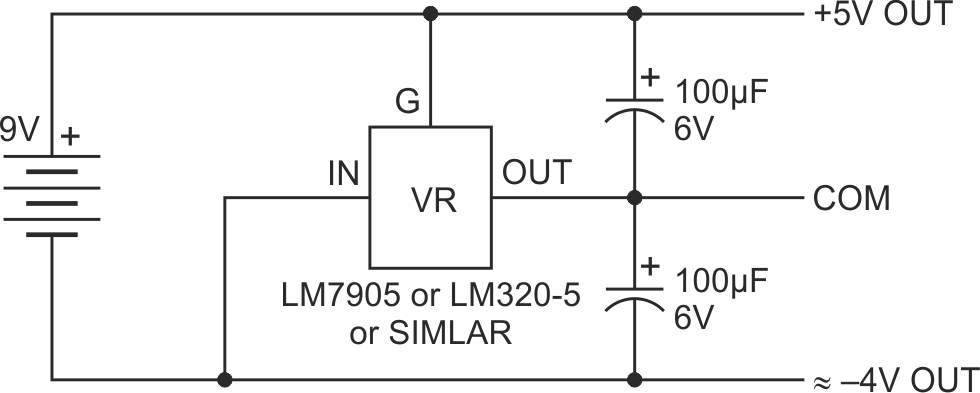Despite the ever-growing choices among single-supply “Rail-to-Rail” op-amps, it will always remain true that the only way to design an output stage active all the way down to zero volts is for the design to include a negative power supply. This fact of life can be an annoying complication in simple battery-powered applications for example. The Design Idea presented here offers a minimalist (and slightly tricky) solution using only a single “legacy” regulator that’s appropriate when symmetrical supplies aren’t required and a few other specific limitations are acceptable.
As shown in Figure 1, the “trick” is to employ a negative regulator (e.g., the venerable 7905/LM320) to produce the positive output rail, taken from the positive side of the power source. The trick works because the regulator actively maintains a programmed (in this case 5 V) difference between its “G” and “OUT” terminals, resulting in a regulated positive voltage between “COM” and “+5 V OUT”. As a bonus, the difference between the power source voltage (5 V – 9 V = –4 V in the example) and the regulated output is available for use as a negative rail, adequate to maintain active output stages at zero volts, or any other secondary use.
 |
||
| Figure 1. | Negative linear regulator splits battery input into positive/negative outputs. | |
So are there any downsides? Actually there are. Three.
- The negative output is unregulated. Any connected loads must therefore be able to maintain required precision despite drift and ripple that may be present on it. Given the excellent supply rejection of modern amplifiers, this is usually not a problem. But it’s something to be aware of.
- Total current draw from the negative rail must not exceed draw from the positive rail. If the positive load isn’t at least as large as the negative, the regulator will not operate.
- If either rail is shorted out, the full source voltage will appear on the other. If both are shorted simultaneously, the regulator will not provide a current limit.
Keeping these limitations in mind, the “upside-down regulator” is a simple solution to a common problem. I’ve used it successfully for decades.